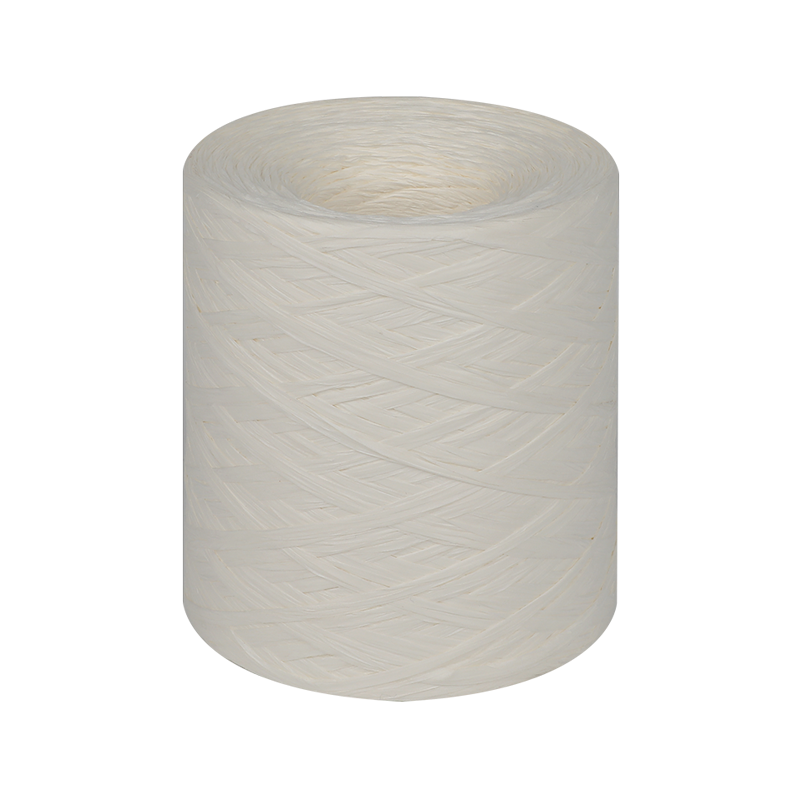The strength of paper yarn, and its ability to support weight and tension without breaking, depends on several factors, including the type of paper used, the manufacturing process, the presence of any treatments or coatings, and the specific application. Here's a detailed analysis:
Factors Influencing Strength
Type of Paper Used:
High-Quality Paper: Using high-quality, long-fiber paper can result in stronger yarn compared to using lower-quality or short-fiber paper.
Recycled Paper: Recycled paper yarn can vary in strength depending on the consistency and quality of the recycled material.
Manufacturing Process:
Twisting and Spinning: The process of tightly twisting and spinning the paper fibers can significantly enhance the strength of the yarn. A tighter twist generally produces a stronger, more durable yarn.
Reinforcement: Some paper yarns are reinforced with additional fibers or coatings to improve their strength and durability.
Blending with Other Fibers:
Blended Yarns: Mixing paper fibers with other stronger fibers, such as cotton, polyester, or nylon, can enhance the overall strength and durability of the yarn.
Treatments and Coatings:
Protective Coatings: Applying coatings or treatments can improve the strength and resistance to breaking under tension. For instance, some paper yarns are coated with resins or waxes to make them more robust.
Strength Characteristics
Tensile Strength:
Pure Paper Yarn: Pure paper yarn can have good tensile strength due to the fiber bonding during the twisting process. However, it is generally not as strong as natural or synthetic fibers like cotton, wool, or nylon.
Reinforced Paper Yarn: Reinforced or coated paper yarns can exhibit significantly improved tensile strength, allowing them to support more weight and tension without breaking.

Support for Weight and Tension:
Light to Moderate Loads: Paper yarn can support light to moderate loads effectively, making it suitable for items such as decorative pieces, light-use bags, and accessories.
Heavy Loads: For applications requiring support for heavy loads or high tension, paper yarn is typically not as suitable as stronger fibers. However, reinforced or blended paper yarns may handle such demands better.
Practical Applications and Testing
Decorative and Light-Use Items:
Suitability: Paper yarn is well-suited for decorative items, home decor, and light-use accessories where extreme strength is not critical.
Examples: Items like wall hangings, baskets, placemats, and light-use bags can benefit from the unique aesthetic and moderate strength of paper yarn.
Functional and Wearable Items:
Blended Yarns: For functional items like garments or wearable accessories, blending paper yarn with stronger fibers can enhance its ability to withstand weight and tension.
Testing: Conducting tensile strength tests and load-bearing experiments can help determine the suitability of specific paper yarns for various applications.
Comparative Strength
Compared to Cotton:
Cotton: Generally stronger and more durable, especially when wet. Cotton can support more weight and tension without breaking.
Paper Yarn: Less strong than cotton but can be sufficient for light-use applications.
Compared to Wool:
Wool: Has natural elasticity and resilience, making it strong and durable. Wool can support considerable weight and tension due to its stretch and recovery properties.
Paper Yarn: Less elastic and generally not as strong as wool.
Compared to Synthetic Fibers:
Synthetic Fibers: Such as nylon or polyester, are typically very strong and can support heavy loads and high tension without breaking.
Paper Yarn: Generally weaker than synthetic fibers, unless significantly reinforced or blended with stronger materials.
Paper yarn particularly when high-quality materials and advanced manufacturing processes are used, can exhibit good strength and support light to moderate weight and tension. However, it is generally not as strong as traditional natural fibers like cotton and wool or synthetic fibers like nylon and polyester. For applications requiring significant strength and load-bearing capacity, reinforced or blended paper yarns are recommended. Proper testing and consideration of the specific use case are essential to ensure that the paper yarn meets the required strength and durability standards.